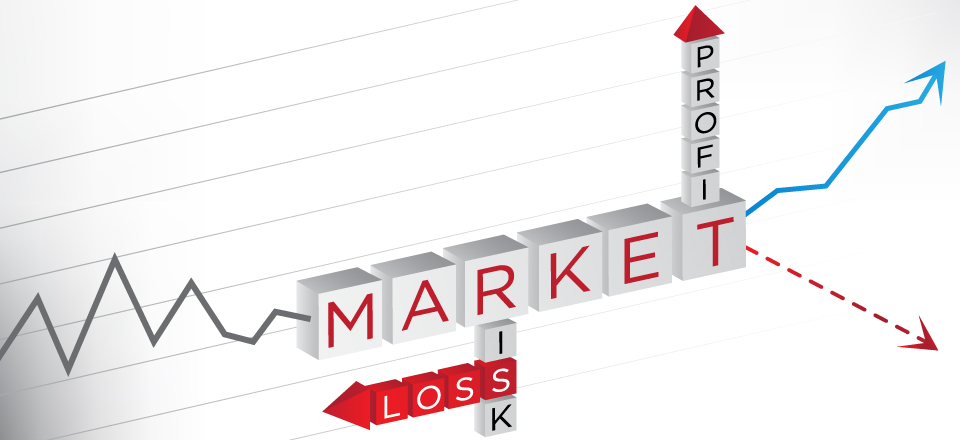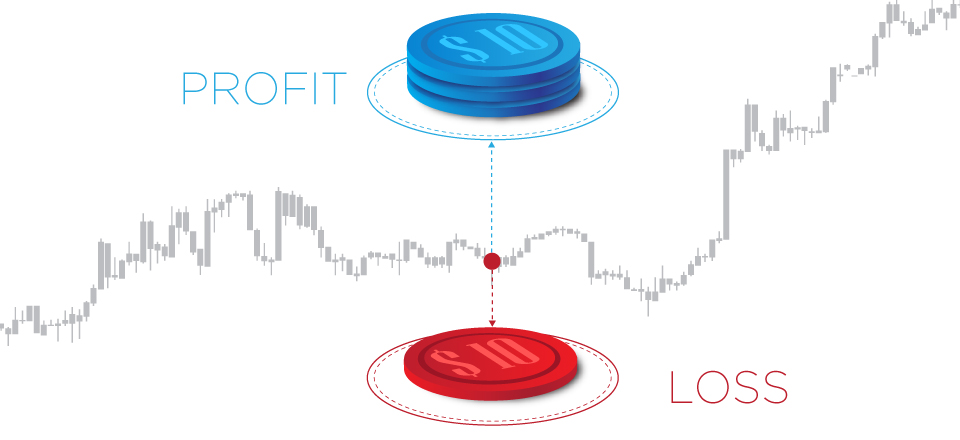Strategic Risk Management in Protrader
Hey there, Protraders!
Trading, especially margin is a high-risk activity. It is connected with high degree of uncertainty of the trading instruments’ dynamics. Making a trade the investor assumes the possibility of obtaining some profit, along with this he takes some probability of loss. The probability and magnitude of possible losses is called as risk. It is very important to take into account also the probability of obtaining a loss, and its magnitude, because having only one measure of risk, such as the absolute value of possible loss, we are unable to estimate accurately the investment attractiveness of a particular trade.
After all the relatively small value of the possible losses may be accompanied by a high probability of its receipt that will eventually lead to losses. Also a small probability of obtaining a loss can be misleading, since the value of this rare loss can nullify the results of a long series of the profitable trades. And so, the primary task of the risk management is to assess and minimize the possible risks when obtaining a sufficient level of profitability.
One of the most common and popular methods of the risk management is diversification. The essence of this approach is simple and intuitive. This method can be described by a proverb: "Do not put all eggs in one basket". In other words, under the risk diversification in the trading we understand the distribution of risks by several trading instruments or strategies. When implementing the negative plan of the events development, with high percent of probability, the loss will be obtained by one or more components of the portfolio, and not by the entire portfolio as a whole. This will provide an opportunity to "soften" a losing period and to compensate the obtained losses at the expense of the profits of the successful portfolio’s part. In this case, the connection between instruments or strategies included in portfolio should be taken into account.
The less the assets or strategies that form the investment portfolio are interconnected, the less the probability of simultaneous receipt of the loss by all the components of the portfolio. Due to this the selection of portfolio components plays an important role in the risk management. Fundamentals of the theory of the optimal investment portfolio formation were developed by Harry Markowitz. The theory of optimal portfolio says that investment portfolios with different risk parameters can satisfy the condition of obtaining the specified profitability. In this case, the portfolio that provides investor with a specified level of profitability with minimal risks will be called as optimal portfolio.
Let’s talk directly about the risks. What types of risks accompany the trading?
Here is a simple risk classification:
- Market risk — price change of traded instruments can lead to losses. And since the dynamics of the price change has high degree of uncertainty then these risks play the primary role in the trading.
- Liquidity risk — trading strategy can show stunning results on the historical tests. But in reality, its parameters can appreciably become worse due to bad strike prices of placed orders. The counterparties may simply not be available at the settlement prices. Also the opening of large trades can be accompanied by significant slippage.
- Political risks — important news in the political life of the countries with which traded instruments are connected can lead to serious changes of the assets cost. In some situations, the trading can be stopped at all.
- Operational risks — failure in the work of an automated trading program, accidental pressing of the wrong key, and absence of Internet or telephone connection. All this may lead to the receipt of unplanned losses.
The investor must take into account all types of risks and try to minimize them.
The following main steps are allocated when working with risks:
- Classification of the risks;
- Determination of the probability and magnitude of possible losses;
- Selection of the risk management method;
- Action plan development in the case of the negative scenario of events;
- Adjustment.
Let’s consider the small example. Operational risks play a significant role during the automated algorithmic trading. The failure in the work of automated trading program or absence of Internet connection can lead to the large losses. Investor must determine all possible situations in which this type of the risk can be implemented. To estimate the probability of such events is practically impossible. Action plan must be developed in the case of risk situation. For example, prepare a backup line of Internet connection in the case of connection break or to be able to call broker and make the necessary actions in the voice mode.
Let’s move to the market risks.
In the case of algorithmic trading, the assessment of market risks is as follows. Such statistics as the average loss value, the maximal loss value, the maximal length of a losing series, the maximal drawdown, the relative drawdown and their derivatives are determined during the holding of historical tests. Next, based on these data, the capital management system is selected in that way to suit personal preferences by risk capital value of the investor. Risk percent of the account in each trade, the percent of profit reinvestment, and different variants with decreasing/increasing of the position size after a series of profit/losses are also included here.
Capital management systems are individual and depend on statistics of the trading system and risk preferences of the investor. Assessing in this way the trading strategy, the investor knows the part of the capital which he risks during its implementation. Constant comparison of current trading results with etalon historical indices occurs during the trading process. If current values of metrics which are used to estimate the trading system state become worse than etalon, the decision to modify or to disable this trading system is made.
Inasmuch as price dynamics of the traded instruments has high degree of uncertainty, the trading system parameters will also be changed with the time. Therefore, to evaluate the worst variants of event development are often used the so-called "stress tests". Example of the simplest "stress test": a large number of experiments are performed by the "Monte Carlo" method by random grouping the historical trading results. Based on obtained results, we can conclude with what probability this trading system can lose a certain percentage of the deposit for a certain period. According to the obtained results we can judge about the sustainability of the trading system.
In the case of discrete trading is often problematic to conduct the historical testing, and thus get the statistics of the trading system. Therefore, investors hold to some simple rules of risk management.
Let’s list the most common:
- In each separate trade the investor runs a risk of a certain percentage from funds on the trading account (typically 1% to 5%). This protects the trading account from the essential losses in a small series of trades.
- Investors try to keep the ratio of possible profit to the possible loss above a certain value, typically higher than 1 to 2. This means that the planned profit should be higher than planned loss of at least 2 times.
- Trading is held only in a specified time. For example, only in the most liquid time.
- The time periods during which the political and financial risks affect the price (if trading strategy doesn’t take into account their effect) are excluded from the trading.
- The obligatory setting of Stop loss and Take profit. Stop loss limits the possible losses at the level acceptable to the investor, and Take profit doesn’t give to lose the already obtained profit.
- Setting the limit of losses for the reporting period (day, week, month, year). When the threshold value is exceeded the trading stops before the end of the trading period. This rule limits the losses in an unsuccessful series of the trades.
Risk management on the broker’s side with respect to the trading accounts of the clients reduced to the tracking of marginal state of the trading accounts, and to the automatic liquidation of the positions in the case of nonfulfillment of the margin requirements. This mechanism protects the investor from obtaining of the negative balance and obligations for debt repayment to the broker.
We got acquainted with the concept of risk management. In the next article we will consider the practical examples of market risk management using the functionality of the Protrader terminal.
Have not tried PTMC yet? There is no better way to boost knowledge than to use it! Start trading with PTMC now!







